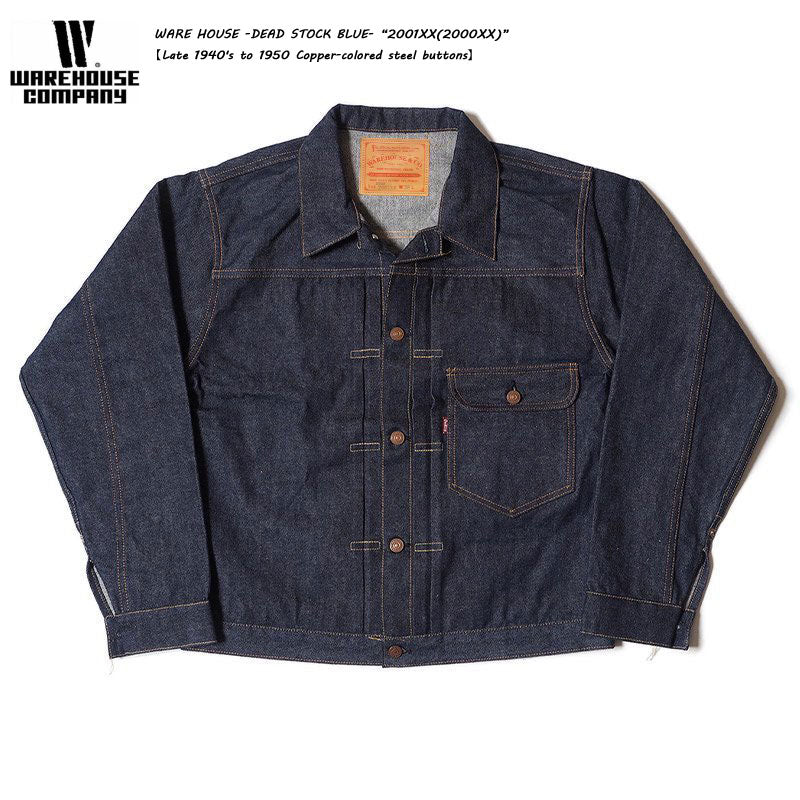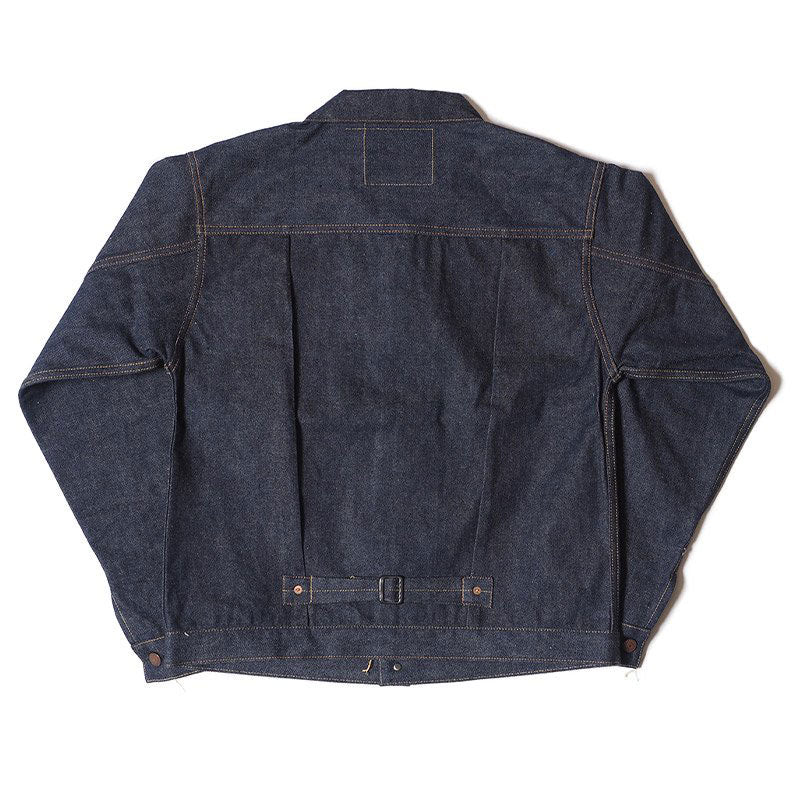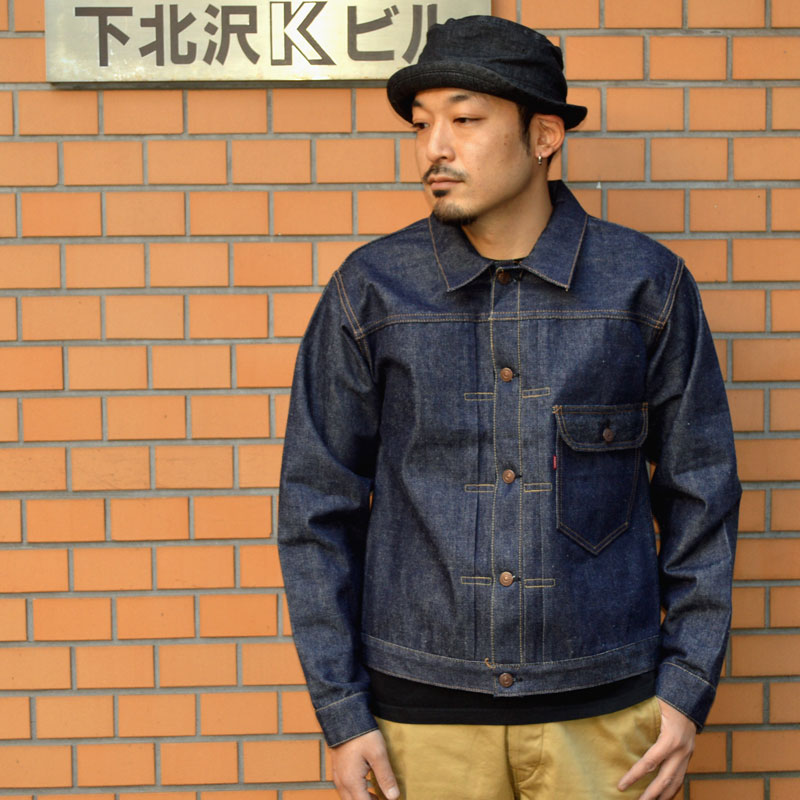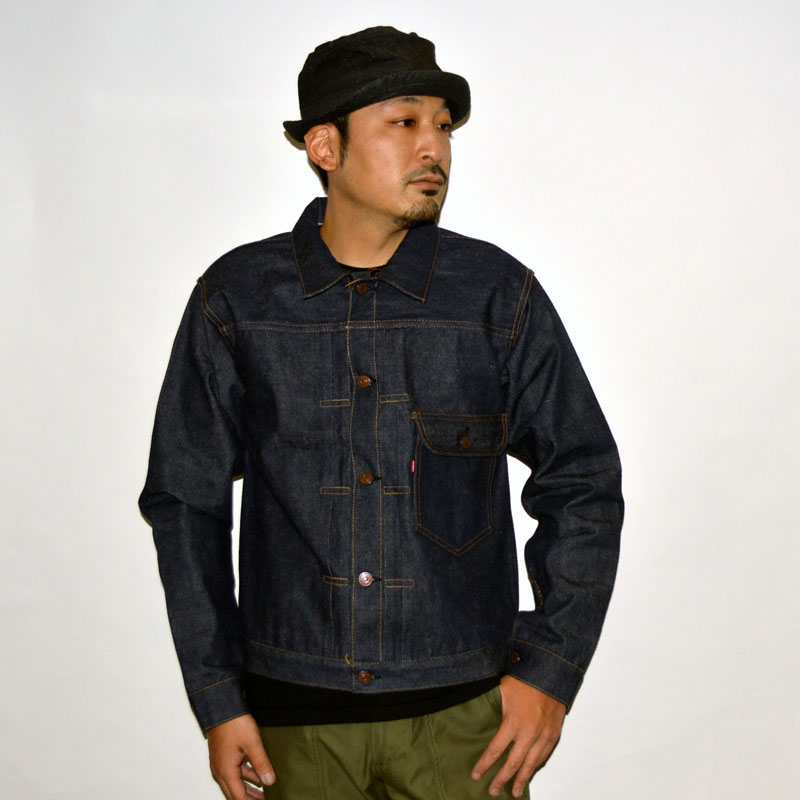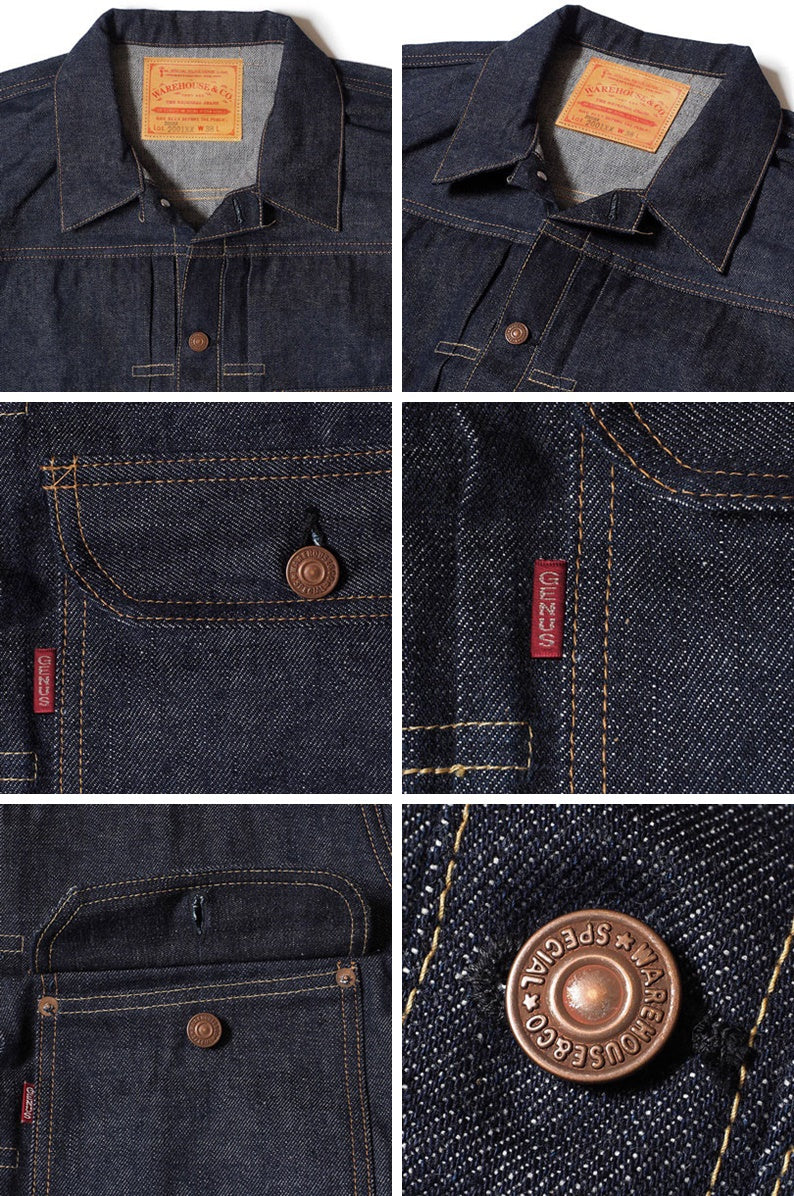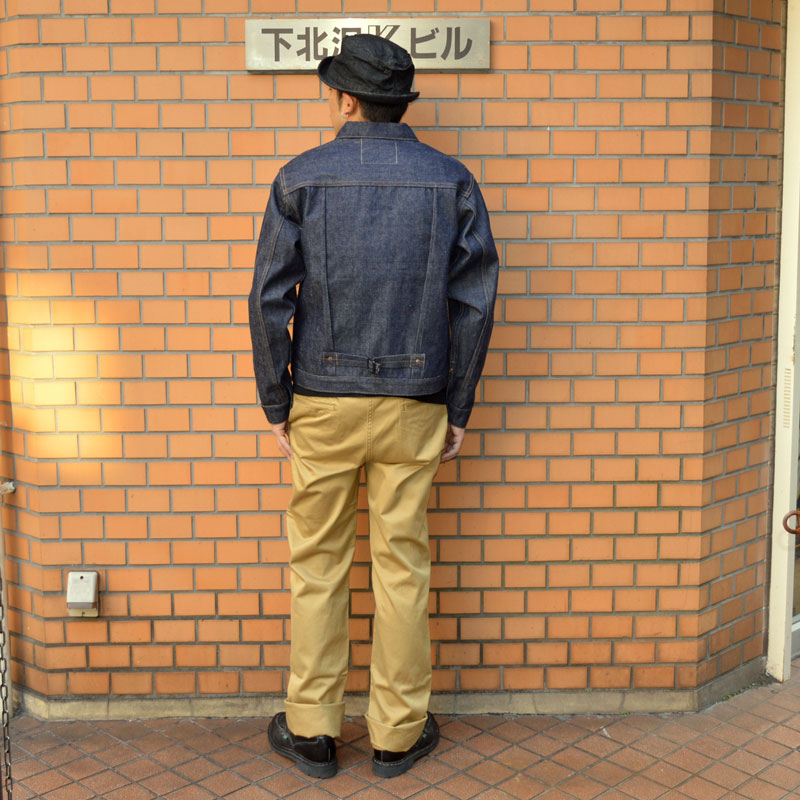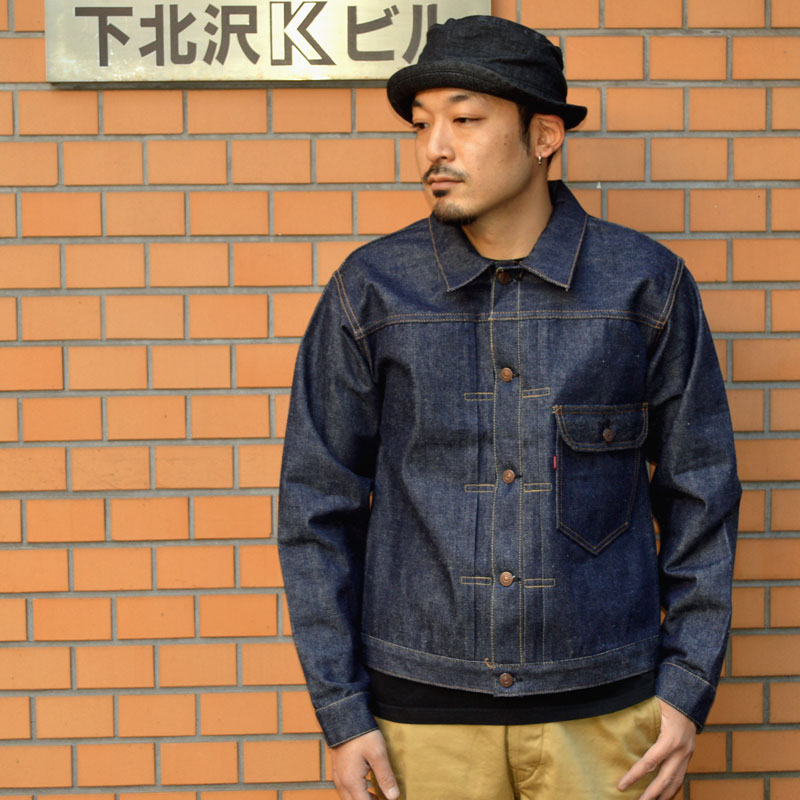Dead Stock Blue (WARE HOUSE) "Lot.2001XX(2000XX)" "Late 1940's to 1950" Copper-colored steel buttons
Dead Stock Blue (WARE HOUSE) "Lot.2001XX(2000XX)" "Late 1940's to 1950" Copper-colored steel buttons
[Dead Stock Blue (WARE HOUSE) "Lot.2001XX(2000XX)" "Late 1940's to 1950" Copper-colored steel buttons]
Among the models manufactured after World War II, there are individuals with a high degree of freedom in arrangement because of the "regulation".
Even though it is the first model, a jacket with copper-colored buttons is one of them, and metal parts for clothing such as buttons and rivets containing "copper", which was prohibited during the war.
Rust is inevitably generated in the iron parts used instead, so we are trying to prevent rust by plating the surface.
"Iron copper plating" was used for rivets at that time. For the tack button, whether the design is a donut button with a laurel pattern or a button with a logo, the material is iron, which has been used for a long time.
However, after the war, copper material was used for the pillars, so it is thought that research was being conducted to prevent button rust.
Models from the 1947s to the 1950s, when wartime regulations were completely lifted, include models that appear to have undergone special processing on this tack button.
That is this Copper-colored steel buttons. It is probable that they dared to try copper plating on the pillars that did not exist during the war and copper plating on the cover part only after the war when regulations were taken.
The Deadstock Blue label originally created this copper-colored button on an individual of a contemporary model of a miraculously found setup.
It's not a strange item such as "the first model using the third button". Because it is a real model backed by the passage of time, it is reproduced as the DSB series.
The era when this denim jacket was born is thought to be from 1949 to the 1950s.
Buckle buckles are in the era of shifting from needle sticks to adjustment types.
The silhouette is an authentic style similar to the DD series DD-2001XX NEW DENIM (1946 MODEL).
There is a moderate amount of space in the width of the body and armholes, and it can be matched to any style such as T-shirts and sweatshirts.
* The sizes below are for raw denim.
* According to the manufacturer's announcement, shrinkage will occur: shoulder width: around 3-4 cm, width: around 3-4 cm, length: around 5-6 cm, sleeve length: around 3-4 cm.
* MODEL DATE *
・ Product number: 2001XX (2000XX) ・ Made in Japan ・ Silhouette [thin ← 1 2 3 4 5 → thick]
-Quality: 100% cotton 7.5 x 7.5 pink selvedge denim, iron tuck buttons (copper plated), vegetable tanning deerskin label
* The model is 173 cm, 64 kg, and the size is 36 (S).
* The above model wears raw denim as it is, so it is just an image of wearing.
If the model wears it after washing, it will be smaller at 36 (S).
Size / width / shoulder width / length / hem width / sleeve length
36 (S) / 52m / 48cm / 61cm / 51cm / 61cm
38 (M) / 55cm / 50cm / 63cm / 53cm / 63cm
40 (L) / 58cm / 52cm / 65cm / 55cm / 65cm
42 (XL) / 61cm / 54cm / 67cm / 57cm / 67cm
*The above measurements were taken with the raw denim laid flat.
According to the manufacturer, after washing, the width will shrink by approximately 3-4 cm, the length by approximately 5-6 cm, the shoulder width by approximately 3-4 cm, and the sleeve length by approximately 3-4 cm.
In addition, measurements were taken with the fabric laid flat and wrinkles removed.
The size numbers may vary by a few centimeters depending on the individual item, the measurement method, and the amount of force used.
The size chart is therefore a guide only and may differ from the actual numbers.
*Product photos are taken with a digital camera.
Please note that the color of the actual product may differ slightly from that of the actual product depending on the LCD screen, etc.
*Click here for detailed size measurement methods
Share
